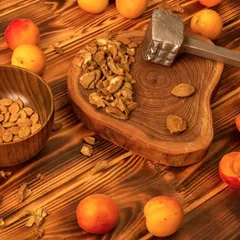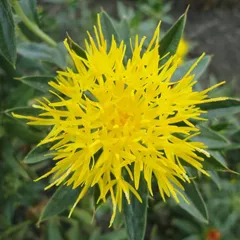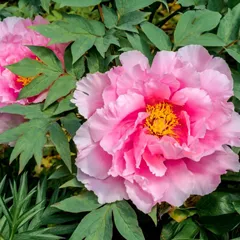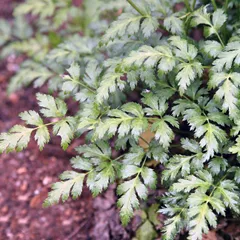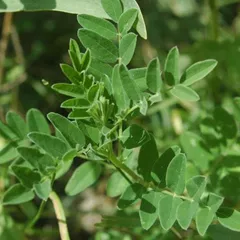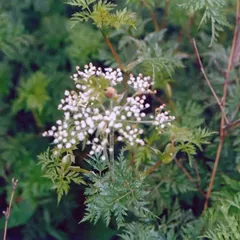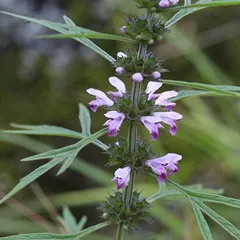Guo Qi Yin
Guo Qi Yin
Chinese: 过期饮
Pinyin: Guò Qí Yǐn
Other names: Delayed Menstruation Drink
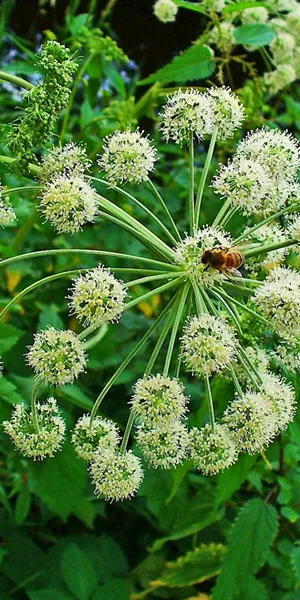
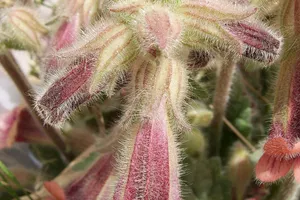
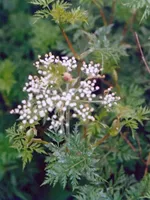
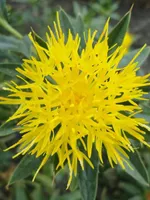




Guo Qi Yin
Guo Qi Yin
Chinese: 过期饮
Pinyin: Guò Qí Yǐn
Other names: Delayed Menstruation Drink
Number of ingredients: 11 herbs
Formula category: Formulas that tonify Blood
Conditions for which it may be prescribed: DysmenorrheaIrregular menstruation
- Warms the menses
- Dispels blood Stagnation
- Nourishes the blood
Contraindications: This formula is inappropriate for those who do not present with Blood... This formula is inappropriate for those who do not present with Blood Deficiency and Cold. Also, because it contains blood-moving herbs, it should not be given to those who bleed heavily during menses or to those who may be pregnant. see more
Source date: 1602 AD
Source book: Indispensable Tools for Pattern Treatment
The information provided here is not a replacement for a doctor. You shouldn't use it for the purpose of self-diagnosing or self-medicating but rather so you can have a more informed discussion with a professional TCM practitioner.
Guo Qi Yin is a 11-ingredient Chinese Medicine formula with Dong Quai (Dang Gui) and Prepared Rehmannia (Shu Di huang) as principal ingredients.
Invented in 1602 AD, it belongs to the category of formulas that tonify Blood. Its main actions are: 1) warms the menses and 2) dispels blood Stagnation.
In Chinese Medicine health conditions are thought to arise due to "disharmonies" in the body as a system. These disharmonies are called "patterns" and the very purpose of herbal formulas is to fight them in order to restore the body's harmony.
In this case Guo Qi Yin is used by TCM practitioners to fight patterns like Qi And Blood Stagnation or Qi and Blood Deficiency. From a Western Medicine standpoint, such patterns can give rise to a range of conditions such as irregular menstruation or dysmenorrhea for instance.
On this page, after a detailed description of each of the eleven ingredients in Guo Qi Yin, we review the patterns and conditions that Guo Qi Yin helps treat.
The eleven ingredients in Guo Qi Yin
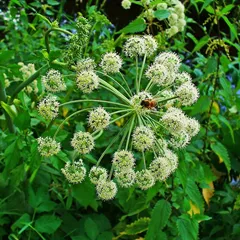
Dang Gui is a king ingredient in Guo Qi Yin. Like the name indicates, it means it has more power than other ingredients in the formula.
1. Dong Quai (Dang Gui)
Part used: Dried root
Nature: Warm
Meridian affinity: HeartLiverSpleen
Category: Tonic herbs for Blood Deficiency
Dang Gui nourishes and invigorates the Blood, warms the menses, and relieves pain. The two key herbs tonify insufficiency in the Nutritive Level and the Blood.

Shu Di huang is a king ingredient in Guo Qi Yin. Like the name indicates, it means it has more power than other ingredients in the formula.
2. Prepared Rehmannia (Shu Di huang)
Part used: Prepared dried root tuber
Nature: Warm
Taste(s): Sweet
Meridian affinity: KidneyLiver
Category: Tonic herbs for Blood Deficiency
In general Shu Di huang's main actions are as follows: "Tonifies the Blood. Tonifies the Yin of the Kidneys."
In the context of Guo Qi Yin, it is used because it nourishes and tonifies the Blood, replenishes the Essence, and tonify the body.
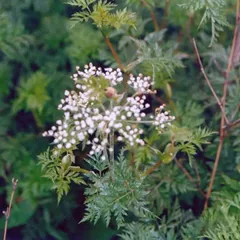
Chuan Xiong is a deputy ingredient in Guo Qi Yin. This means it helps the king ingredient(s) treat the main pattern or it serves to treat a coexisting pattern.
3. Szechuan Lovage Roots (Chuan Xiong)
Part used: Dried rhizome
Nature: Warm
Taste(s): Pungent
Meridian affinity: GallbladderLiverPericardium
Category: Herbs that invigorate the Blood
In general Chuan Xiong's main actions are as follows: "Regulates and moves the Blood. Relieves Wind-Cold and pain. Circulates the Qi in the Upper Burner, relieving headaches."
In the context of Guo Qi Yin, it is used because it invigorates the Blood and moves Blood Stagnation.
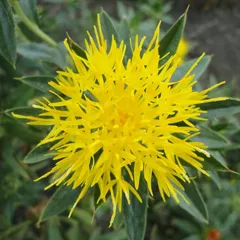
Hong Hua is a deputy ingredient in Guo Qi Yin. This means it helps the king ingredient(s) treat the main pattern or it serves to treat a coexisting pattern.
4. Safflowers (Hong Hua)
In general Hong Hua's main actions are as follows: "Moves Stagnant Blood and regulates menses. Relieves pain caused by Blood Stasis."
In the context of Guo Qi Yin, it is used because it invigorates the Blood and moves Blood Stagnation.
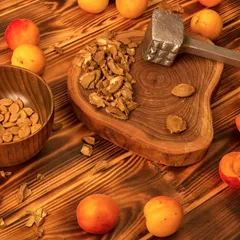
Tao Ren is a deputy ingredient in Guo Qi Yin. This means it helps the king ingredient(s) treat the main pattern or it serves to treat a coexisting pattern.
5. Peach Kernels (Tao Ren)
Part used: Dried ripe seed
Nature: Neutral
Meridian affinity: HeartLarge intestineLiver
Category: Herbs that invigorate the Blood
In general Tao Ren's main actions are as follows: "Moves Blood and breaks up Stasis. Moistens the Intestines. Relieves coughing."
In the context of Guo Qi Yin, it is used because it invigorates the Blood and moves Blood Stagnation.
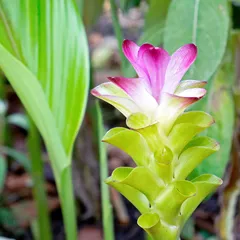
E zhu is a deputy ingredient in Guo Qi Yin. This means it helps the king ingredient(s) treat the main pattern or it serves to treat a coexisting pattern.
6. Zedoary Rhizomes (E zhu)
Part used: Rhizoma
Nature: Warm
Meridian affinity: SpleenLiver
Category: Herbs that invigorate the Blood
In general E zhu's main actions are as follows: "Invigorates Qi and removes Blood Stagnation. Relieves pain. "
In the context of Guo Qi Yin, it is used because it invigorates the Blood and moves Blood Stagnation.
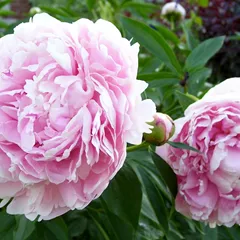
Bai Shao is an assistant ingredient in Guo Qi Yin. This means that it either serves to reinforces the effect of other ingredients or it moderates their toxicity.
7. White Peony Roots (Bai Shao)
Part used: Dried root
Nature: Neutral
Meridian affinity: LiverSpleen
Category: Tonic herbs for Blood Deficiency
Bai Shao softens the Liver and moderates the pain. Cold contributes to the Blood Stagnation and intensifies Blood Stagnation by causing the vessels to contract.
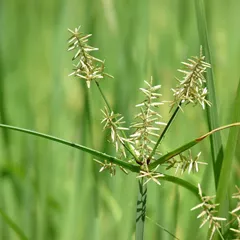
Xiang Fu is an assistant ingredient in Guo Qi Yin. This means that it either serves to reinforces the effect of other ingredients or it moderates their toxicity.
8. Coco-Grass Rhizomes (Xiang Fu)
Part used: Dried rhizome
Nature: Neutral
Meridian affinity: LiverSanjiaoSpleen
Category: Herbs that regulate Qi
In general Xiang Fu's main actions are as follows: "Unblocks Stagnant Liver Qi and relieves pain. Regulates the Liver and Spleen. Assists the regulation of menses and relieves pain."
In the context of Guo Qi Yin, it is used because it supports the body's Qi dynamic.
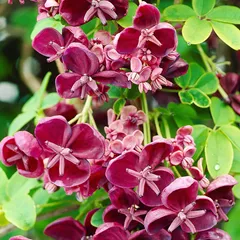
Mu Tong is an assistant ingredient in Guo Qi Yin. This means that it either serves to reinforces the effect of other ingredients or it moderates their toxicity.
9. Akebia Stems (Mu Tong)
Part used: Dried stem
Nature: Cold
Taste(s): Bitter
Meridian affinity: HeartLungSmall intestine
Category: Herbs that drain Dampness
In general Mu Tong's main actions are as follows: "Encourages urination and clears Heat. Clears Heat and inflammation of the Heart. Promotes lactation. Moves and smoothes the flow of Blood. Used for painful obstruction associated with either Dampness, Blood Stagnation, Wind or Heat."
In the context of Guo Qi Yin, it is used because it promotes the flow of Body Fluids.
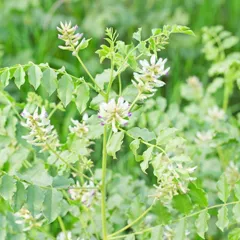
Gan Cao is an assistant ingredient in Guo Qi Yin. This means that it either serves to reinforces the effect of other ingredients or it moderates their toxicity.
10. Liquorice (Gan Cao)
Part used: Dried root and rhizome
Nature: Neutral
Taste(s): Sweet
Meridian affinity: HeartLungSpleenStomach
Category: Tonic herbs for Qi Deficiency
Gan Cao softens the Liver and moderates the pain. Cold contributes to the Blood Stagnation and intensifies Blood Stagnation by causing the vessels to contract.
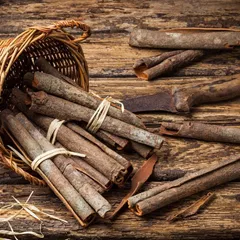
Rou Gui is an assistant ingredient in Guo Qi Yin. This means that it either serves to reinforces the effect of other ingredients or it moderates their toxicity.
11. Cinnamon Bark (Rou Gui)
Rou Gui warms the Lower Burner and thwart congealing and clumping from Cold. It disperses Cold, and for this reason is combined with Liquorice and White peony root as a remedy for cold abdominal pain.
Conditions and patterns for which Guo Qi Yin may be prescribed
It's important to remember that herbal formulas are meant to treat patterns, not "diseases" as understood in Western Medicine. According to Chinese Medicine patterns, which are disruptions to the body as a system, are the underlying root cause for diseases and conditions.
As such Guo Qi Yin is used by TCM practitioners to treat two different patterns which we describe below.
But before we delve into these patterns here is an overview of the Western conditions they're commonly associated with:
Irregular menstruation Dysmenorrhea
Again it wouldn't be correct to say "Guo Qi Yin treats irregular menstruation" for instance. Rather, Guo Qi Yin is used to treat patterns that are sometimes the root cause behind irregular menstruation.
Now let's look at the two patterns commonly treated with Guo Qi Yin.
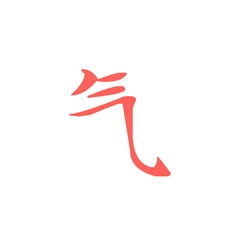
Qi is one of Chinese Medicine's vital subtances. Learn more about Qi in Chinese Medicine
Qi And Blood Stagnation
Pulse type(s): Choppy (Se), Deep (Chen), Fine (Xi)
Symptoms: Insomnia Dark face Moodiness Dizziness Chest pain Depression Amenorrhea Purple lips Mood swings Breast pain Hot flushes Purple nails Irritability Blotchy skin Restlessness Breast lumps Restlnessness Chest fullness Painful period Scanty periods Clots in blood Abdominal pain Abdominal masses Lochia retention Breast distention Dark colored blood Abdominal fullness Intense period pain High blood pressure Swelling of the feet Lower abdominal pain Dark menstrual blood Flooding and leaking Abdominal distension Pre-menstrual tension Black and tarry stools Irregular menstruation Boring fixed stabbing pain Pre-menstrual irritability Dark clots in menstrual blood Menstruation decreases gratually Feeling of fullness in the chest Abdominal distention and fullness Pain relief after clots discharge
Guo Qi Yin is sometimes prescribed by TCM practitioners to treat Qi And Blood Stagnation. This pattern leads to symptoms such as chest fullness, chest pain, boring fixed stabbing pain and dark face. Patients with Qi And Blood Stagnation typically exhibit choppy (Se), deep (Chen) or fine (Xi) pulses.
The typical symptoms of Qi stagnation are distension, oppression and swelling. There are also emotional issues like mood swing, depression or irritability. However, the Blood Stagnation is more on pains and purple color manifestation on skin, face, lips and nails.
Qi Stagnation can cause the... read more about Qi And Blood Stagnation

Qi is one of Chinese Medicine's vital subtances. Learn more about Qi in Chinese Medicine
Qi and Blood Deficiency
Pulse type(s): Slowed-down (Huan), Weak (Ruo), Fine (Xi)
Tongue coating: Partial absence of coating
Tongue color: Pale
Symptoms: Edema Fatigue Vertigo Anxiety Insomnia Dry hair Dry skin Dry lips Tingling Numbness Dry eyes Pale face Dizziness Pale lips Hair loss Tiredness Sore back Weak voice Sore knees Depression Low energy Poor memory Pale tongue Watery milk Palpitations Listlessness Loose stools Poor appetite Scanty periods Blurred vision Low milk supply Pale complexion General weakness Aversion to speak Pale color periods Shortness of breath Numbness in the skin Spontaneous sweating Lower abdominal pain Pale menstrual blood Numbness in the limbs Dream disturbed sleep Dull menstrual cramps Feeling of bearing down Thin and watery periods Withered and brittle nails Thin body lacking strength Pain relieved with massage Lethargic and withdrawn state Spontaneous flow of breast milk Menstruation decreases gratually No feeling of distension of the breasts Insufficient or absent lactation after childbirth
Guo Qi Yin is sometimes prescribed by TCM practitioners to treat Qi and Blood Deficiency. This pattern leads to symptoms such as general weakness, fatigue, weak voice and pale face. Patients with Qi and Blood Deficiency typically exhibit slowed-down (Huan), weak (Ruo) or fine (Xi) pulses as well as Pale tongue with thin white coating .
The Qi and Blood are from the some origin and these two elements are transformable between each other. The Qi creates the Blood, and vice versa the Blood supplies Qi. Therefore it is quite common both patterns appear at the same time.
When general Qi is Deficient, the patients lack the energy to... read more about Qi and Blood Deficiency
Formulas similar to Guo Qi Yin
Tao Hong Si Wu Tang is 55% similar to Guo Qi Yin
Qing Re Tiao Xue Tang is 55% similar to Guo Qi Yin
Shi Quan Da Bu Tang is 55% similar to Guo Qi Yin
Ge Xia Zhu Yu Tang is 50% similar to Guo Qi Yin
Shen Tong Zhu Yu Tang is 50% similar to Guo Qi Yin
Ba Zhen Yi Mu Tang is 45% similar to Guo Qi Yin

